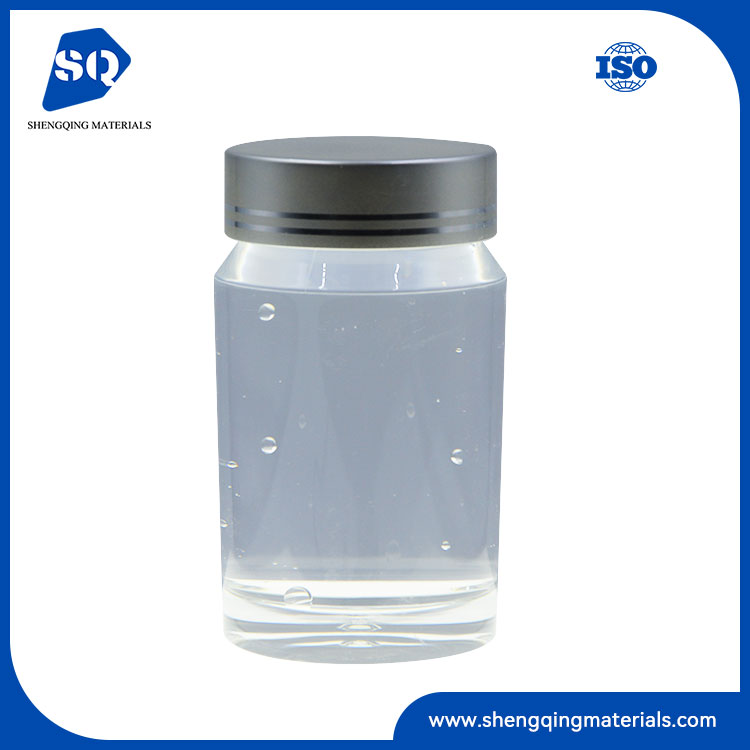What Are the Chemical Components of the Household Thickening Agent We Usually Use?
2025-04-30
Household Thickening Agent is a substance that can increase the viscosity of latex and liquid. It is also called paste when used in food. Thickeners can increase the viscosity of the system, keep the system in a uniform and stable suspension state or emulsion state, or form a gel. Most thickeners have both emulsification effects. Thickeners are widely used in food, cosmetics, detergents, latex, printing and dyeing, medicine, rubber, coatings, etc.
Thickeners are divided into two categories: natural and synthetic.
Most natural products are made from plants and seaweeds containing polysaccharide sticky substances, such as starch, gum arabic, pectin, agar, gelatin, alginate, carrageenan, dextrin, etc. General gelatin, soluble starch, polysaccharide derivatives, etc. can be used in cosmetics; synthetic products include carboxymethyl cellulose, propylene glycol alginate, methyl cellulose, sodium starch phosphate, sodium carboxymethyl cellulose, sodium alginate, casein, sodium polyacrylate, polyoxyethylene, polyvinyl pyrrolidone, etc.

There are mainly the following types of Household Thickening Agents in detergents:
Polymer thickeners: Common ones include polyacrylamide and polyvinyl alcohol. This type of thickener can form a network structure in the detergent, increase the viscosity and adhesion of the detergent, and improve the cleaning effect.
Natural gum thickeners: Increase the viscosity of the detergent by adding natural gum substances. These Household Thickening Agents can interact with the ingredients in the detergent to form a viscous substance, which improves the adhesion and cleaning effect of the detergent.
Inorganic salt thickeners: such as sodium chloride, which is generally a surfactant aqueous solution system. The most commonly used inorganic salt thickener is sodium chloride, which has a significant thickening effect. The presence of inorganic salts can increase the number of micelle associations and transform spherical micelles into rod-shaped micelles, thereby increasing the viscosity.
Fatty alcohol and fatty acid thickeners: They can be regarded as non-ionic surfactants. They have both lipophilic groups and hydrophilic groups. The presence of a small amount of such organic matter has a significant effect on the surface tension and other properties of the surfactant. Its effect increases with the lengthening of the carbon chain, and generally shows a linear relationship.
Alkyl alcohol amide thickener: It can thicken in the presence of electrolytes and achieve the best effect. Various alkanolamides have great differences in performance, and the most commonly used is coconut diethanolamide. Alkyl alcohol amides can not only control the viscosity of the product, but also have foaming and foam stabilization effects.
Fatty alcohol polyoxyethylene ether sulfate (AES) ether thickener: Under normal circumstances, only inorganic salts can be used to adjust the viscosity to a suitable level. In addition, its thickening effect is closely related to the distribution width of the unreacted alcohol and homologues contained in the product. The narrower the distribution of the homologues, the greater the thickening effect.
Ester thickener: This type of Household Thickening Agent is also a non-ionic thickener, mainly used in surfactant aqueous solution systems. Its advantage is that it is not easy to hydrolyze and has stable viscosity over a wide pH and temperature range. Currently, the most commonly used is PEG-150 distearate.
Amine oxide thickener: Amine oxide is a polar nonionic surfactant with thickening effect. Its characteristics are: under neutral or alkaline conditions, amine oxide exists as a non-ionized hydrate in aqueous solution, showing non-ionicity; in acidic solution, it shows weak cationicity.
In addition, betaine and other agents are also used as Household Thickening Agents. The appropriate combination of these thickeners can produce synergistic effects and further enhance the decontamination effect.



